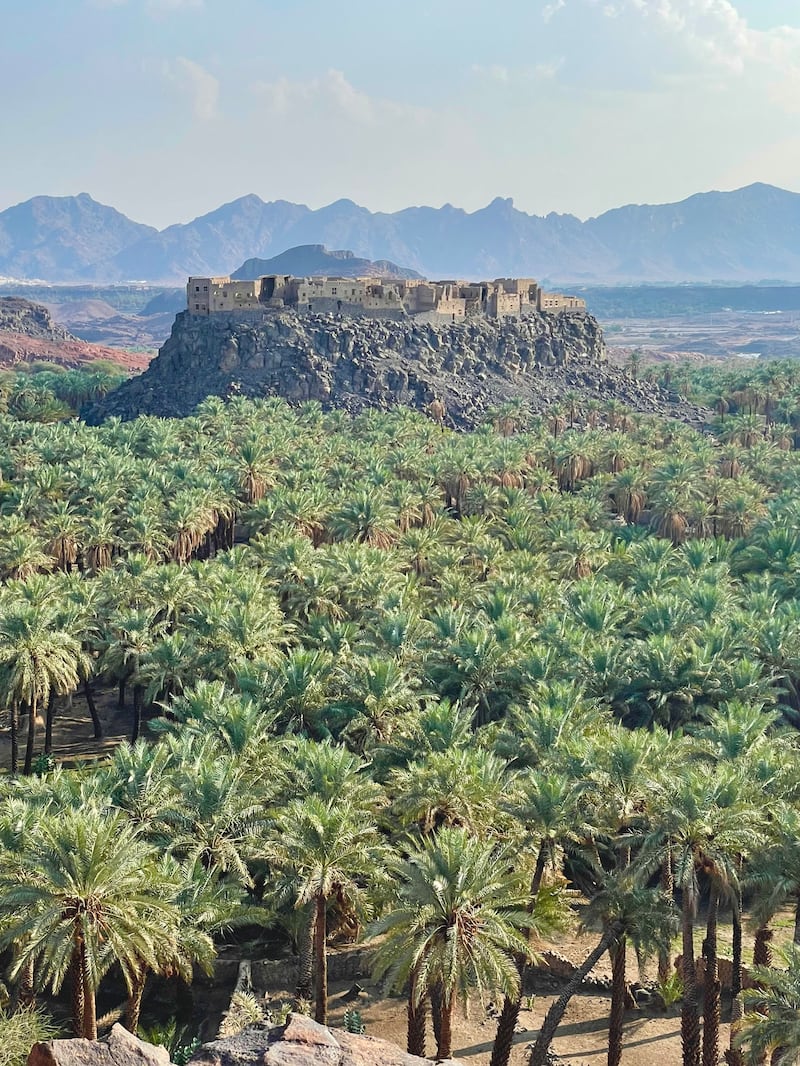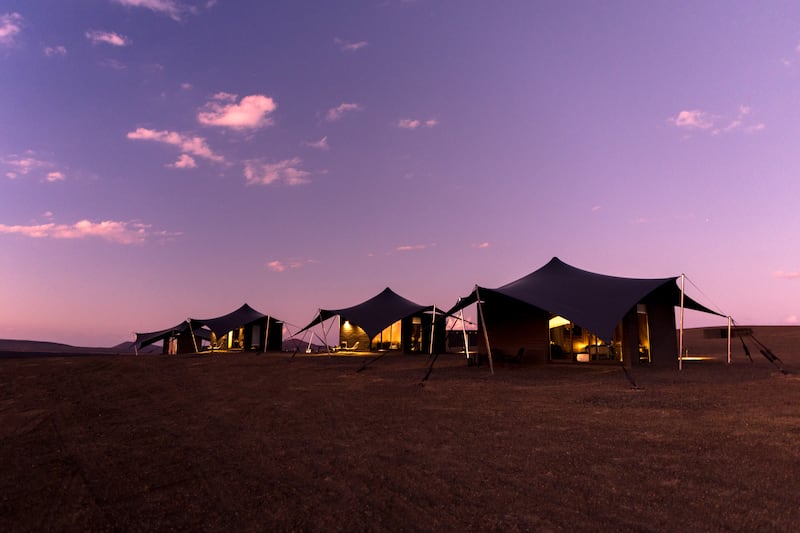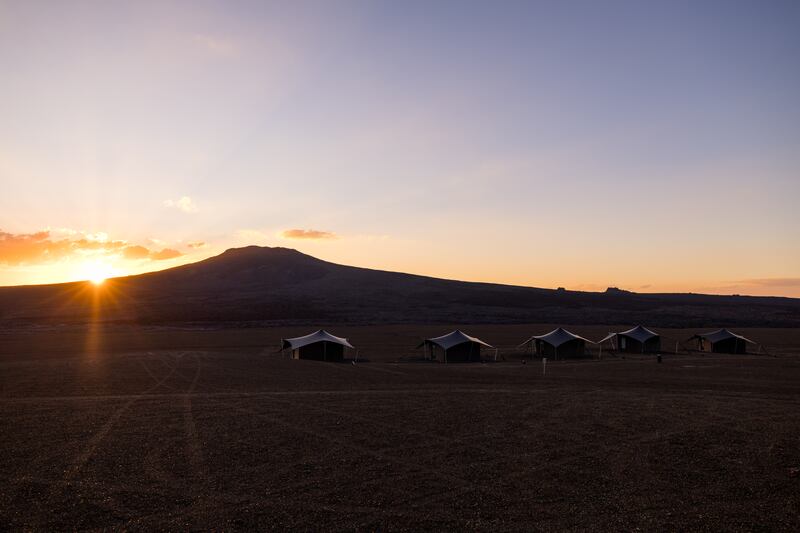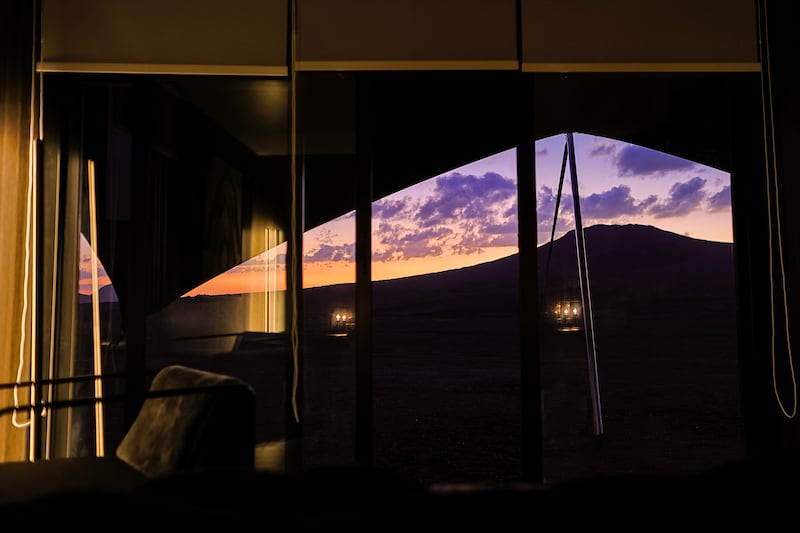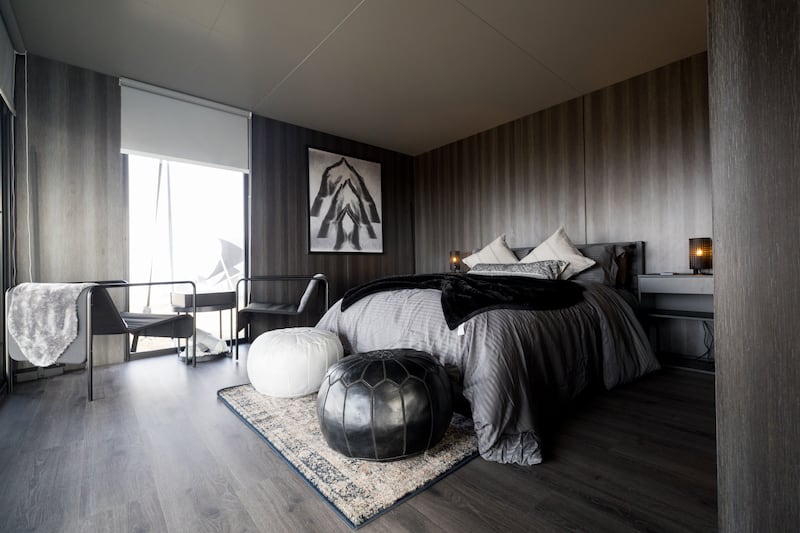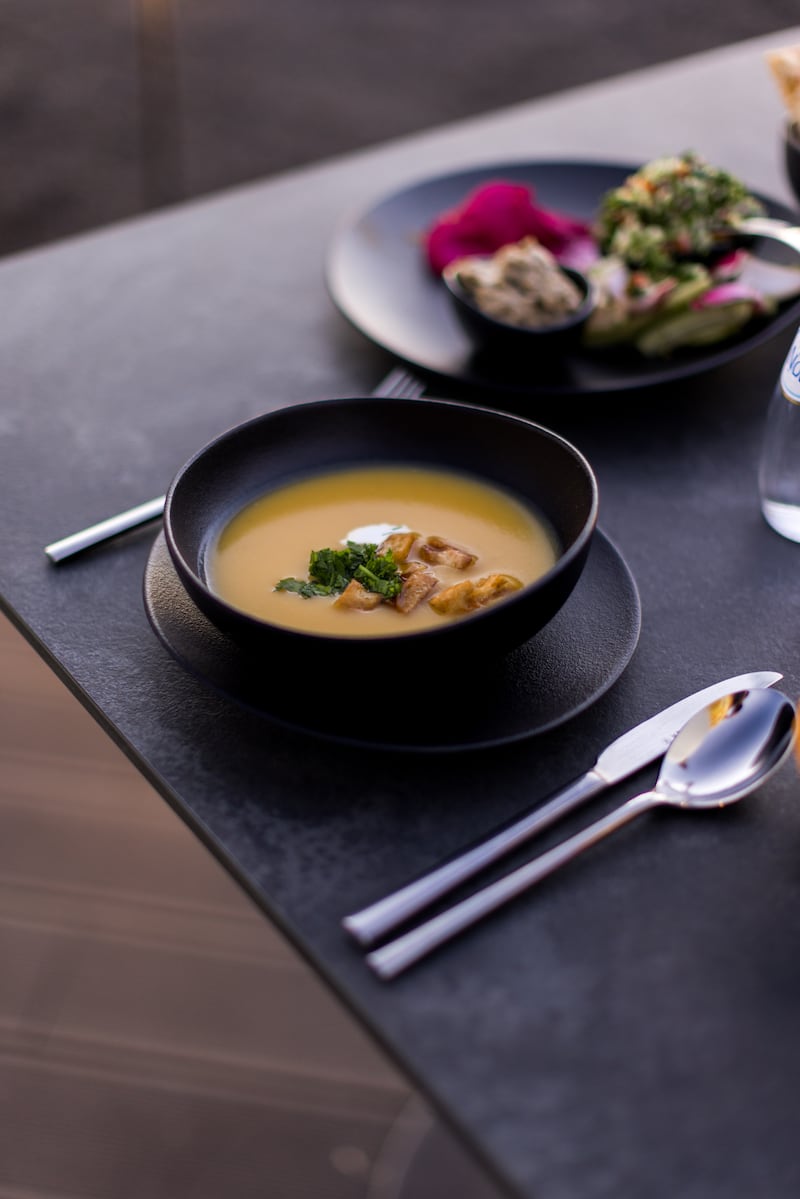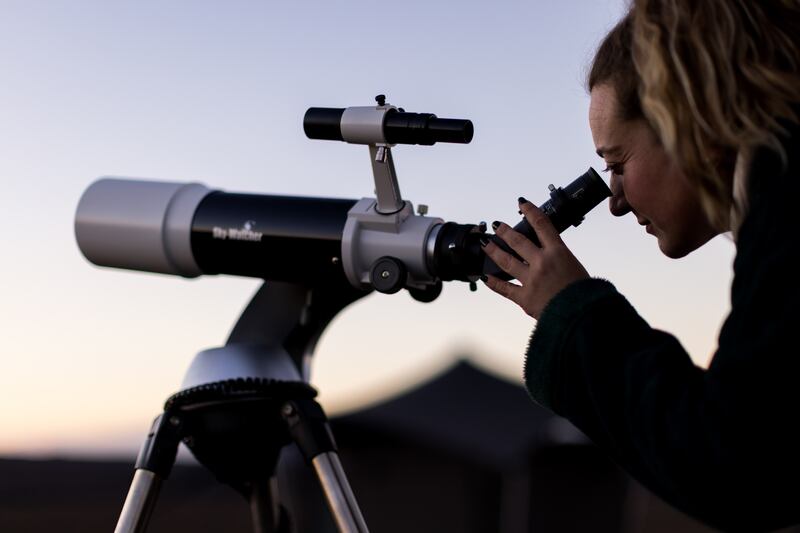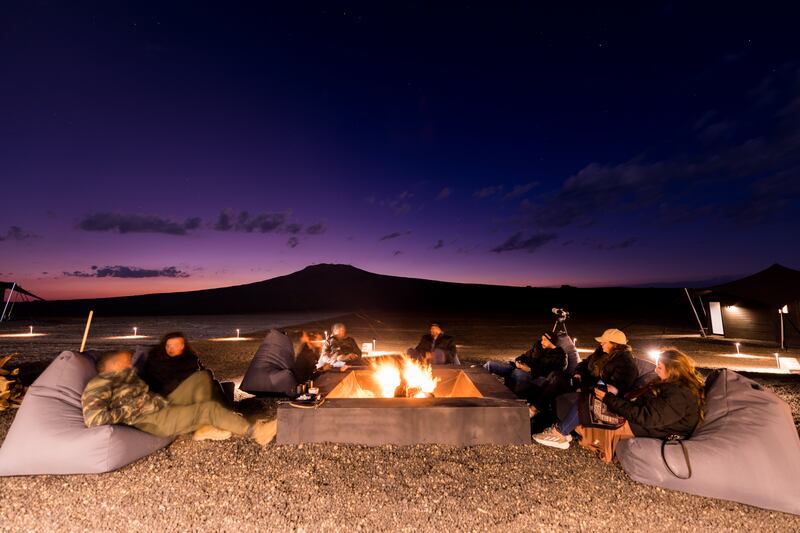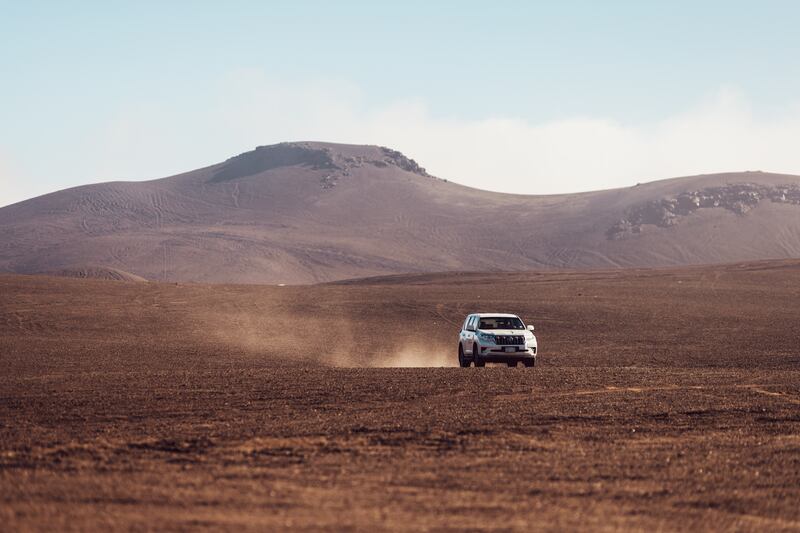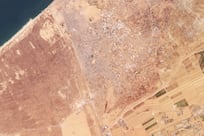After successfully opening AlUla to tourists in Saudi Arabia, the kingdom is showcasing nearby hidden gems, such as Khaybar, a beautiful ancient oasis surrounded by lava fields (called Harrat), which is one of the oldest inhabited archaeological areas in the Arabian Peninsula.
A land with strong historical roots and cultural importance, Khaybar is a three-hour drive from AlUla, about 170 kilometres north of the city of Madinah.
It's also now home to the newly opened Khaybar Volcano Camp, offering luxury accommodation to tourists alongside personalised experiences and activities.
Khaybar is famous for its stone structures dating back to the Bronze Age or, some argue, to the fifth millennium BC and these have helped historians and archaeologists study evolution and history. "British pilots flying over the area to deliver mail post-First World War were the first to discover the 'kite'-like structures on ground," a helicopter pilot in Khaybar tells The National.
Hundreds of thousands of traps and graves, shaped in different patterns, popularly known as keyholes, kites, triangles and bullseyes are spread across the country, especially in Khaybar. All of this is treated as evidence that a huge civilisation lived in the Arabian Peninsula, with archaeologists and professors at King Saud University saying it could be the origin of human existence.
The stone structures known as mustatils are believed to be among the earliest built by humankind.
The oasis collects the highest rainfall in the country, which helps the complex irrigation canals used for lush green fields, vegetation and enormous palm trees, offering us a glimpse into how ancient civilisations lived on this land thousands of years ago.
Ancient towns, castles and fortresses built with stones and mud are stacked, intact, on top of mountains. Various tombs and stone structures that helped capture animals for hunting remain intact and more discoveries are still being unearthed by local and international archaeologists.
Tourists are welcomed at the reception centre, in the heart of the oasis, overlooking the village of Al-Rawan, Ain Al-Juma'a and Pebble Al-Dabal. Young Saudi storytellers, or Rawis, who speak several languages, greet guests with coffee, dates, fruits and Middle Eastern confectionery.
Young Saudis are taking ownership of their own narrative and telling a story that's deeply rooted in the traditions, culture and heritage of north-west Saudi Arabia. "We love telling the story of our country, it's an honour and privilege to be able to share it with the world," Mohamed Aleshaiwy, a Rawi in Khaybar, tells The National. "Tourists who visited us from Spain were surprised to know I speak fluent Spanish and I was able to communicate better with them, and being able to make people happy while sharing our culture is a honour for me."
Guests get a guided tour on the oasis trail surrounding Al Nizar Fort and can embark on a helicopter ride for a full view of Khaybar and its landmarks. Visitors can also shop at the artisan stores at the centre and indulge in local cuisine.
Takya, for example, is a popular Saudi fusion restaurant from Riyadh that sits on top of the reception centre, offering picturesque views of the oasis trail and castles. It serves traditional Saudi dishes with a modern twist, including saleeg, hasawi rice, mantu and cheese motabaq.
Visitors can also enjoy the record-breaking "1,450 synchronised drones show", which tells the stories of its ancient past. The show takes place every weekend in the evenings at the reception centre, where people can enjoy unobstructed views from the terrace, or Takya.
Last month, the Royal Commission for AlUla opened the prominent heritage sites in Khaybar governorate, as part of a sustainable development plan to renew and develop the historical Khaybar Oasis, Saudi Press Agency reported.
The RCU aims to link the oases of the ancient Arab kingdoms in AlUla, Taima and Khaybar, in a bid to transform the region into the largest living museum in the world.
"The RCU aims to revive the archaeological sites through initiatives targeting four main areas, including: Al-Rawan village, Ain Al-Jama, and Khaybar Oasis, through which it is possible to enjoy the scenic views, in addition to activating Umm Jarasan Cave in the coming period," SPA reported.
